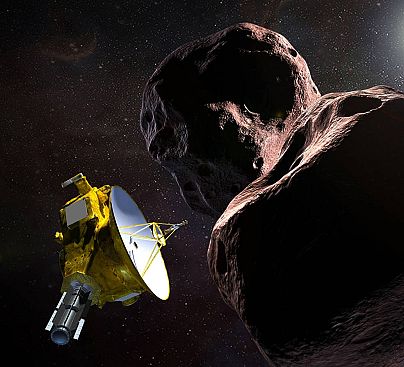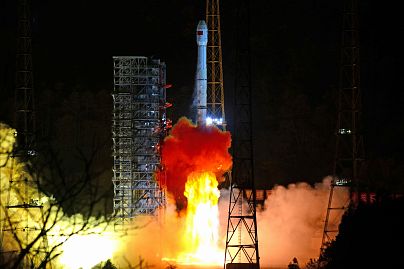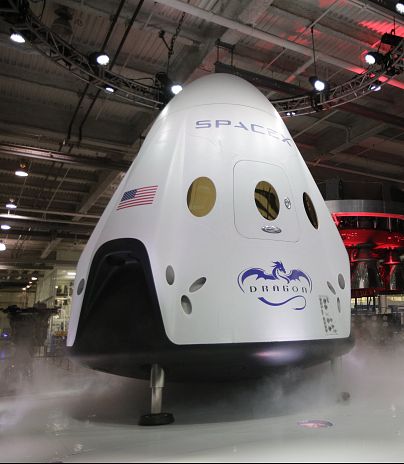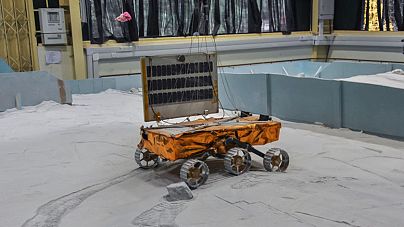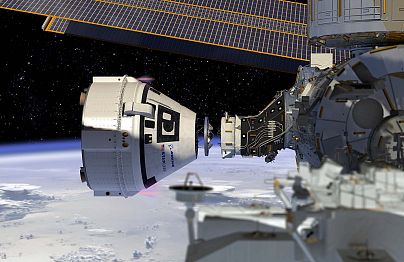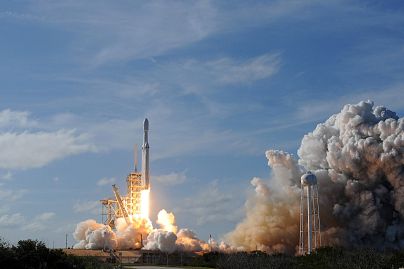If 2018 was a busy one for spaceflight, the coming year promises to be even busier.
In the past year, NASA landed a probe on Mars, China launched a spacecraft to the far side of the moon, and commercial spaceflight firms like SpaceX and Virgin Galactic made important strides in their quest to take their first paying passengers into space.
But if 2018 was a busy one for spaceflight, the coming year promises to be even busier. Among other things, the schedule includes a historic flyby of the most distant object ever visited, the debut of new astronaut capsules and the 50th anniversary of the Apollo 11 mission that put humans on the moon for the first time.
"It's going to be incredibly exciting," said Eric Stallmer, president of the Commercial Spaceflight Federation, an industry group in Washington. "I'm a huge student of history and I adore the whole Apollo era, but that was one of the early chapters, and we're looking at the next chapters in the coming year."
Here are the most noteworthy space events scheduled for 2019 (all launch dates are subject to change):
JANUARY
NASA's New Horizons spacecraft conducts flyby of Ultima Thule
The New Horizons probe was designed to study Pluto. But after its successful rendezvous with the dwarf planet in 2015, the craft continued speeding along into the Kuiper Belt, a debris-filled region of the solar system beyond the orbit of Neptune. Here, at a distance of about 4 billion miles from Earth, New Horizons will zoom past the icy object 2014 MU69, which is nicknamed Ultima Thule, on Jan. 1.
The New Year's rendezvous will make Ultima the most distant object ever visited by a spacecraft.
China makes first landing on the far side of the moon
On Dec. 7, China launched its robotic Chang'e 4 spacecraft on the world's first mission to the far side of the moon. The robotic lander and the rover being carried on the craft could touch down as early as Jan. 1 within the South Pole-Aitken basin, one of the moon's largest and oldest impact craters.
The Chang'e 4 mission is a prelude to a successor robotic mission, Chang'e 5, which is designed to return lunar samples to Earth.
SpaceX performs first test flight of new crew capsule
SpaceX has been developing its Crew Dragon capsule as a replacement for NASA's space shuttles, which were retired in 2011. The new craft is designed to ferry up to seven astronauts to and from the International Space Station, ending NASA's reliance on Russia's Soyuz capsules.
During its first uncrewed test flight, which is scheduled for Jan. 17, the capsule will launch aboard a SpaceX Falcon 9 rocket from Cape Canaveral, Florida, dock with the space station and then return to Earth, splashing down in the Atlantic Ocean
If it's successful, the Crew Dragon's first test flight with astronauts aboard will follow later in the year.
Science
Israel launches its first spacecraft to the moon
Sometime in the first quarter of 2019, a Tel Aviv-based nonprofit called SpaceIL will launch a 1,322-pound lunar lander on a SpaceX Falcon 9 rocket from Cape Canaveral, Florida. After a two-month journey, the lander will touch down on the moon, with the earliest landing attempt pegged for Feb. 13.
With the mission, Israel hopes to become the fourth nation to land a craft on the moon, after the U.S., Russia and China.
SpaceIL was formed to compete in Google's Lunar X Prize competition, a now-defunct international contest that offered $20 million to the group that could send the first privately funded spacecraft to the moon. The competition ended with no winner in March 2018.
India launches its second mission to the moon
On Jan. 31, India's space agency will launch its second lunar mission, Chandrayaan-2, sending a robotic orbiter, lander and rover to the moon. Chandrayaan-2, which will touch down at the lunar south pole, will study the moon's mineral content and its topography.
India's first lunar mission, Chandrayaan-1, launched in October 2008. That mission found evidence of water ice on the moon's surface.
FEBRUARY
British startup launches first set of satellites for all-Earth internet
Sometime in February, a London-based startup called OneWeb will launch the first 10 satellites of what ultimately will be a fleet of 600 telecommunications satellites designed to provide high-speed internet service to every part of the world. The satellites will launch aboard an Arianespace Soyuz rocket from the Guiana Space Centre in French Guiana.
Soyuz rocket takes crew to the International Space Station
On Feb. 28, a Russian Soyuz rocket will lift off from the Baikonur Cosmodrome in Kazakhstan, carrying NASA astronauts Nick Hague and Christina Koch and Russian cosmonaut Alexey Ovchinin to the ISS. The crew will join three spaceflyers who are already aboard the station.
MARCH
Boeing conducts first test flight of its CST-100 Starliner capsule
Like SpaceX, Boeing is developing a space capsule to replace NASA's retired space shuttle fleet. Sometime in March, Its CST-100 Starliner will take its maiden flight aboard an Atlas V rocket from Cape Canaveral, Florida, with the uncrewed capsule docking with the space station before parachuting back to Earth. If the test is successful, Boeing could conduct crewed test flights of the Starliner in August.
SpaceX's Falcon Heavy rocket returns to space
SpaceX's Falcon Heavy booster completed its maiden launch on Feb. 6, 2018, lifting off from Kennedy Space Center in Cape Canaveral, Florida, and launching a Tesla Roadster into space. On its second flight, which is planned for early in 2019, the huge rocket will carry 25 individual payloads for the U.S. military and NASA, including weather satellites and a space radiation experiment.
The Falcon Heavy can lift a heavier payload than any American rocket since NASA's Saturn V booster, which carried Apollo astronauts to the moon in the 1960s and '70s.
JUNE
SpaceX launches first crewed test flight of its Crew Dragon capsule
If the uncrewed test flight of SpaceX's Crew Dragon is successful, the craft will return to space with two spaceflyers aboard. NASA astronauts Doug Hurley and Bob Behnken will fly Crew Dragon to the space station.
Three space station crew members return to Earth
NASA astronaut Anne McClain, Canadian astronaut David Saint-Jacques and Russian cosmonaut Oleg Kononenko will return to Earth in their Soyuz capsule, landing in Kazakhstan sometime in June.
JULY
China conducts first test of next-generation crewed spacecraft
China is expected to test the successor to its crewed Shenzhou spacecraft sometime in mid-2019, but a detailed timeline of the mission hasn't yet been revealed. For its first test flight, the reusable 20-ton spacecraft will launch aboard a Chinese Long March 5B rocket without a crew. China currently uses its Shenzhou spacecraft for trips to and from low-Earth orbit.
50th anniversary of Apollo 11 moon landing
On July 20, it will be 50 years since astronaut Neil Armstrong became the first human to step foot on the moon. As he climbed down the ladder of his lunar module and stepped onto the surface of the moon in 1969, Armstrong uttered the line that became famous: "That's one small step for a man, one giant leap for mankind." Armstrong and his crewmate Buzz Aldrin explored the moon's surface for almost three hours before climbing back into their lunar module and heading home.
NASA has a series of events planned to commemorate the anniversary.
DECEMBER
China launches sample-return mission to the moon
After its Chang'e 4 mission to the lunar far side, China will attempt an even more ambitious lunar mission sometime toward the end of the year. Chang'e 5 will include a lander designed to collect samples of lunar rocks and soil and return them to Earth.
If successful, it would be the first time materials from the moon will have been brought back to Earth since 1976.












